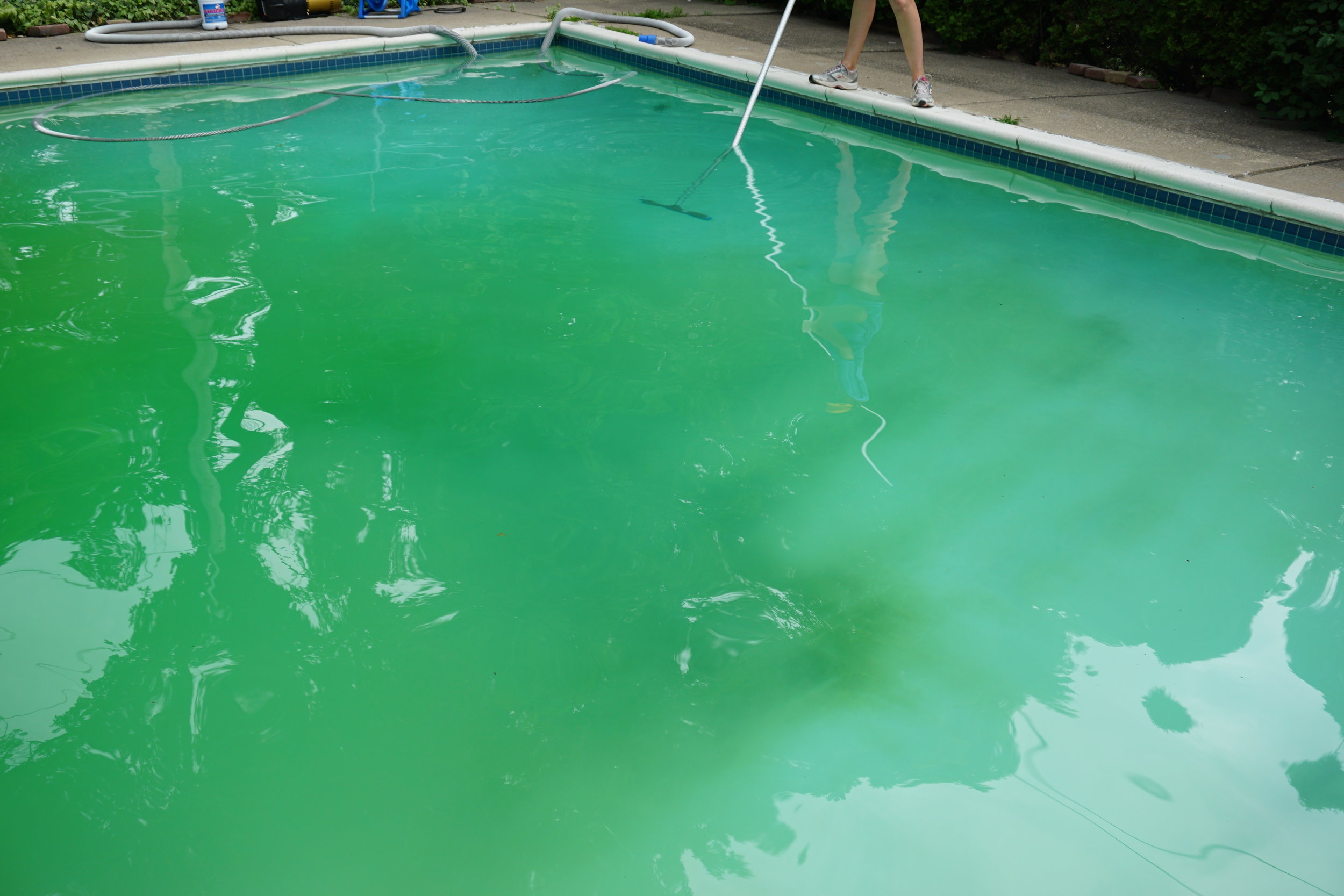Remove and Prevent Algae Growth
Oh no!!... the pool is green!
Every pool owner dreads a green pool. There are various types of algae that can occur, with green algae as the most common. However there are other types, like brown and mustard (yellow) algae, which can be treated and prevented.
Please feel free to visit the video tutorials at the end of the article
Make sure to brush pool walls and floor
- Green algae, the most common, can be eliminated with a couple simple steps. Vacuuming algae that has settled on the pool floor and walls to waste, not backwash. Why? Algae is about 1.5 to 15 microns. Only a D.E. filter could potentially filter out algae. A sand filter has a micron rating of 20 to 40. Therefore, it would not filter out algae.
Adjust the pH to the proper level, and add a strong shock treatment (2-3 times the normal does) combined with a dose of Bio-Guard Algae All 60® will kill the algae. Brush the entire pool surface so that any algae that stuck to the floor, or wall, gets brushed up. Bio-Guard Algae Complete works very well in preventing algae.
Then vacuum any dead algae or debris to waste the next day, or two. Floating algae can be filtered out using a clarifier like Polysheen Blue to help coagulate the floating particles followed by sufficient backwashing. If you cannot see more than a few feet down, then Power Floc™ may be required.
Vacuuming to algae to waste
After the process was finished, pool was shocked and treated after
TIP #1: If the pool water is dark green, more shock will be required than with a light green pool. A minimum double shock treatment will be two times a standard dose. Bags of shock describe dosing on their product labels.
TIP# 2: Placing a garden hose in the pool while vacuuming to waste will help slow help when refilling the pool to the proper level.
- "Black algae," or blue-green algae, usually grows in shady areas of the pool and doesn't occur frequently in vinyl pools because this type of cyanobacteria prefers rough surfaces, like in gunite pools. Treatment is similar to green algae, however the surfaces must be brushed thoroughly before adding algaecide and chlorine shock.
- Mustard algae (yellow algae) often looks like dirt or sand on the bottom or sides of a pool. It's often misdiagnosed, but if it looks like dirt, but is slimy, there's a chance it's mustard algae. Mustard algae is chlorine resistant and we recommend the same treatment as black algae, however an algaecide like Bio-Guard's Banish® may be needed to stop and prevent growth from mustard algae. In the Rochester area, it is uncommon to have a case of mustard algae.
After a heavy shock treatment and brushing, the water was very foggy requiring Power Floc™
In some cases, Power Floc™ will be needed to get the algae to coagulate and settle on the pool floor. Vacuuming should be done to waste in all cases. Please feel free to contact us for tips, or to make a trip to help clean up your pool






